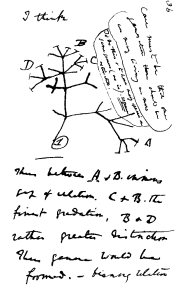Are You Smarter Than a Reptile?
William B. Miller, Jr. M.D.
Are you smarter than a reptile? In many respects, you certainly are. After all, no reptile is going to read this article. However, our clearly superior intellectual abilities for certain skills has seduced us towards a dismissive attitude towards the surprisingly deep and broad range of analytical gifts of our companion creatures. A growing body of research now indicates that other animals of all sizes and varieties are highly intelligent problem solvers within their own realms. After all, their cognitive skills have enabled them to successfully survive for eons and that may not necessarily prove to be true of we humans. Consider termites. They are strikingly social animals and have constructed elaborate societies for 200 million years. They engage in a primitive sort of agriculture, farming varieties of fungus for food. As individuals, they demonstrate remarkable intelligence and an even more surprising group intelligence that enables complicated feats of soil engineering in a diverse range of environments. Within their complex societal structure, termites divide labor between varied types of specialized workers, for example, infant care, manual labor, reproduction or soldiers for the defense of the colony. All of this proceeds via highly evolved and complex patterns of communication and signaling.Individual bees are intelligent and can even solve problems that are mathematically based. For example, they effectively decide the Traveling Salesman dilemma of optimizing the most efficient route to visit large numbers of locations in a single day. Bees communicate in a rich symbolic non-verbal language that enables them to transmit abstract concepts to others such as the location of particular flowers over large distances based on angles of the sun. They even seem to understand some rudimentary concepts of medical care utilizing medications within their hives. For example, honeybees colonies have been demonstrated to self medicate with plant resin to combat fungal infections. What about ants. They’re no slouches. They can navigate long distances to find food and can communicate its location to others with facility. As individuals, they can seek family members, memorize multiple alternate locations and can integrate a large number sources of information. They are even altruistic and will help other ants in distress. Modern research is teaching that intelligence is not directly linked to brain volume. All sizes can be demonstrate high intelligence. Birds have small brains but are terrific problem solvers. They are highly cooperative and exhibit a wide range of highly intelligent behaviors. For example, they use vocal learning. Their songs are a complex language. Did you realize that they give lifelong names to their young? They are even known to mourn the loss of others. Birds also have a gyroscopic sense of geography and can store seeds in thousands of places that they can remember. Can we do that? Perhaps you suppose that only humans are capable of understanding analogies. However, crows can use analogies to solve higher order tasks. They understand sharing, can use rudimentary arithmetic and can invent meanings for words. Cockatoos can solve puzzles with at least 5 steps. They can even keep time to music.So perhaps lizards aren’t smart. How unfair if you think so. Lizards are social animals with rich societies and hierarchies. They can bond, recognize family members, and care for children. Some iguanas demonstrate counting abilities and can rapidly learn techniques that they haven’t seen in the wild.Might fish be intellectually impaired? In fact, fish lead complex social lives and are highly intelligent. Predator fish species can cooperate together and even with other species by utilizing head motions and posturing to cooperate to capture elusive prey. They understand concepts of negotiated agreements of partnership and, just like humans, sometimes cheat. In a comparison of the intellectual capacity of primates and fish, who do you think should win? In a food test comparing fish with monkeys, chimpanzees and orangutans, it was the fish that proved more adept at learning the advantages of certain patterns of food choices and were faster at it. And individual fish have personalities. Timid ones stay timid and aggressive ones remain bold. They also demonstrate individually distinguishable levels of curiosity and social ability. Fish can play, have excellent memories and perform complex courtship rituals. And Tusk fish even use tools to open shells for food, an act of intellect which used to be considered as exclusive to humans but is now known to be widely distributed among species. Certainly then, we must be much smarter than microbes. However, if intelligence is construed as using information to solve problems to successfully reproduce and survive in hostile environments, then they might be considered among the most intelligent. Some bacterial strains and even some viruses have survived essentially unchanged in any significant manner for hundreds of millions of years, in part this by using elaborate signaling patterns for communication among themselves and others. So what might we make of this widely distributed world wide intelligence than had been previously understood? First, our intelligence might be of a unique kind, but it is not the only intelligence of consequence on this planet. Ours is just different and suited to the types of problems that we need to solve. We have vastly underestimated the intelligence, feelings and complexity of the inner lives of our companion creatures on this planet. The implications are profound for our relationship towards them and our stewardship of the planet we share. Additionally, the ubiquity of refined intelligence requires a thorough re-examination of our evolutionary narrative. Intelligence exists at every scope and scale underscores every aspect of evolutionary development. This emerging understanding teaches us that all cognitive ability starts at the cellular level. All complex creatures must in turn be viewed as integrated collections of intelligent cells,……..vast collaboratives of cellular intelligence, …. we in our human package, and they in theirs. Our form of collective intelligence may be privileged compared to others, but it is not different in its essence. As a species, we would do well to grasp this vital truth.
 The Microcosm Within | Modern Theory of Evolution |
The Microcosm Within | Modern Theory of Evolution |








